Abstract
Peak ascending and descending aortic blood flow velocities were measured using continuous wave Doppler ultrasound velocimetry in 30 children with coarctation or recoarctation of the aorta and in 13 control subjects. The results were compared with the arm to leg systolic blood pressure difference. The peak flow velocities in the descending aorta were significantly higher in the patients than in the control subjects and there was a close correlation with the systolic blood pressure gradient. Since there was no overlap of flow velocities between the patients and the control subjects the Doppler technique enables coarctation confidently to be excluded as well as demonstrating its presence and severity. The method is simple, rapid, independent of the condition of the aortic valve, and is applicable to neonates in whom the diagnosis of coarctation may otherwise be difficult. In older children it is useful for detecting recoarctation and following its progress, particularly in patients in whom a reliable estimate of the systolic blood pressure gradient cannot be obtained.
Full text
PDF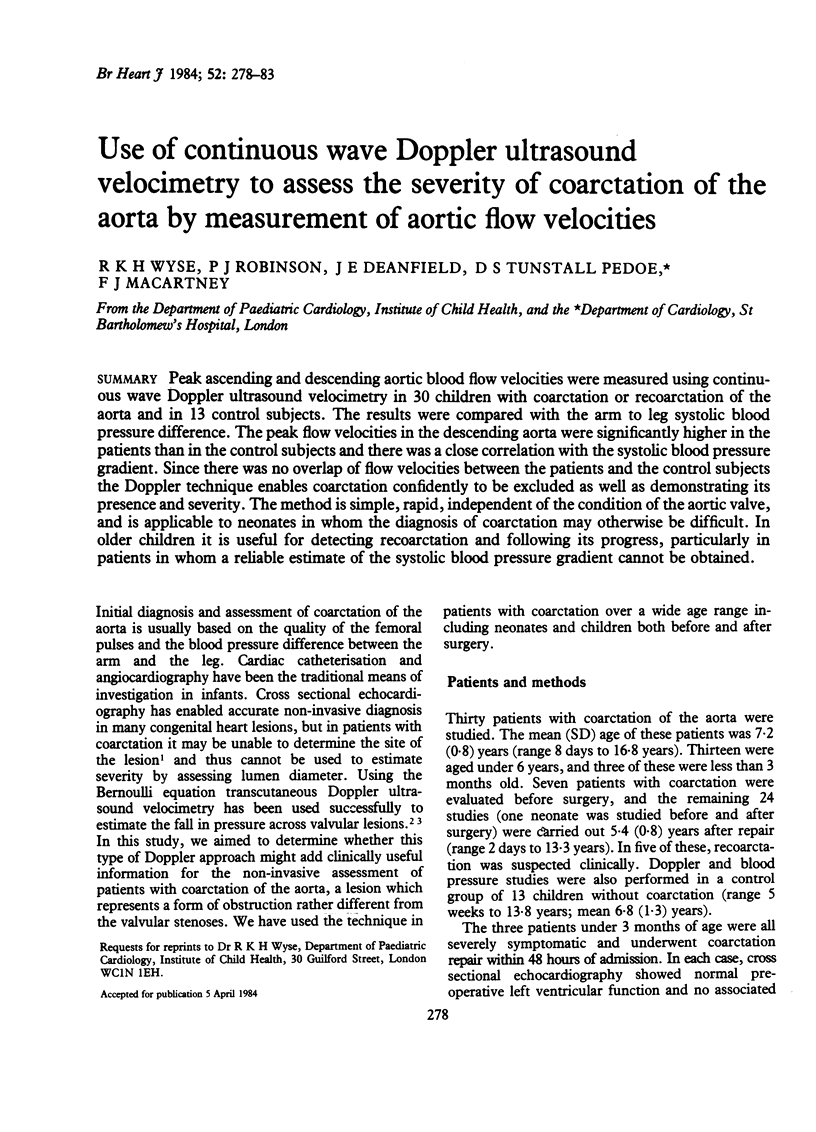
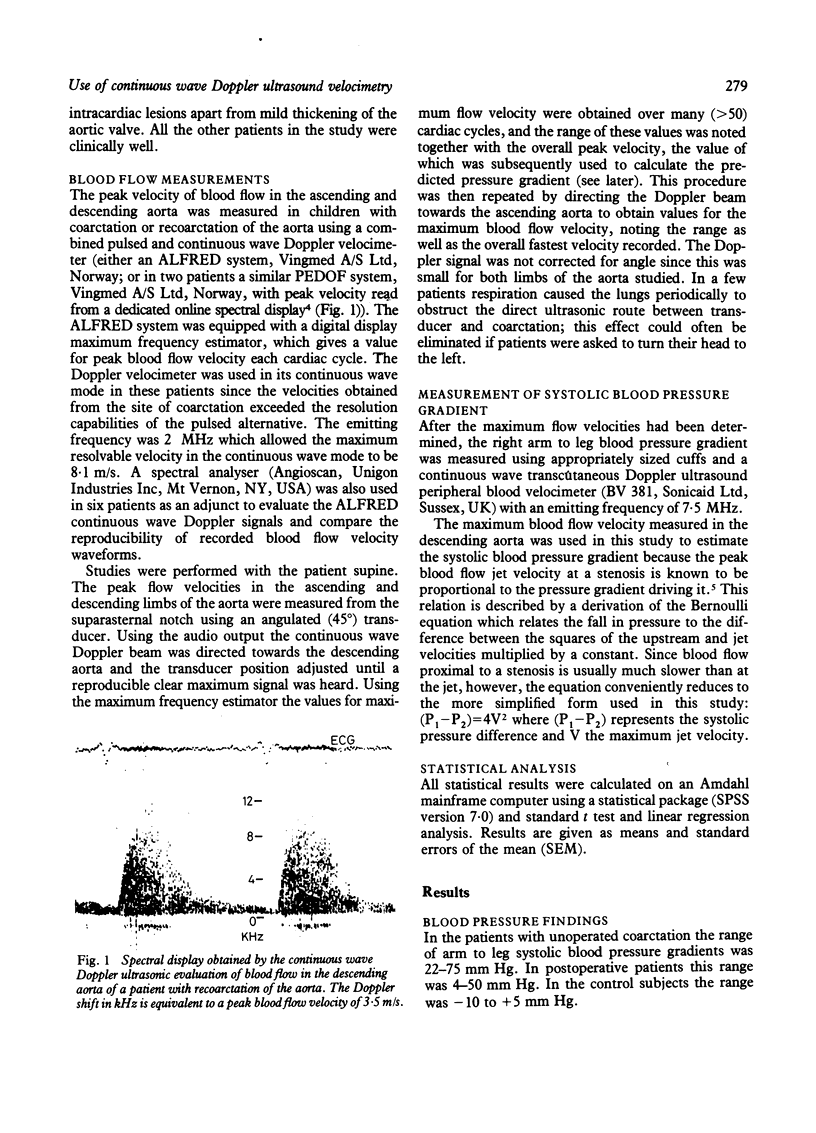
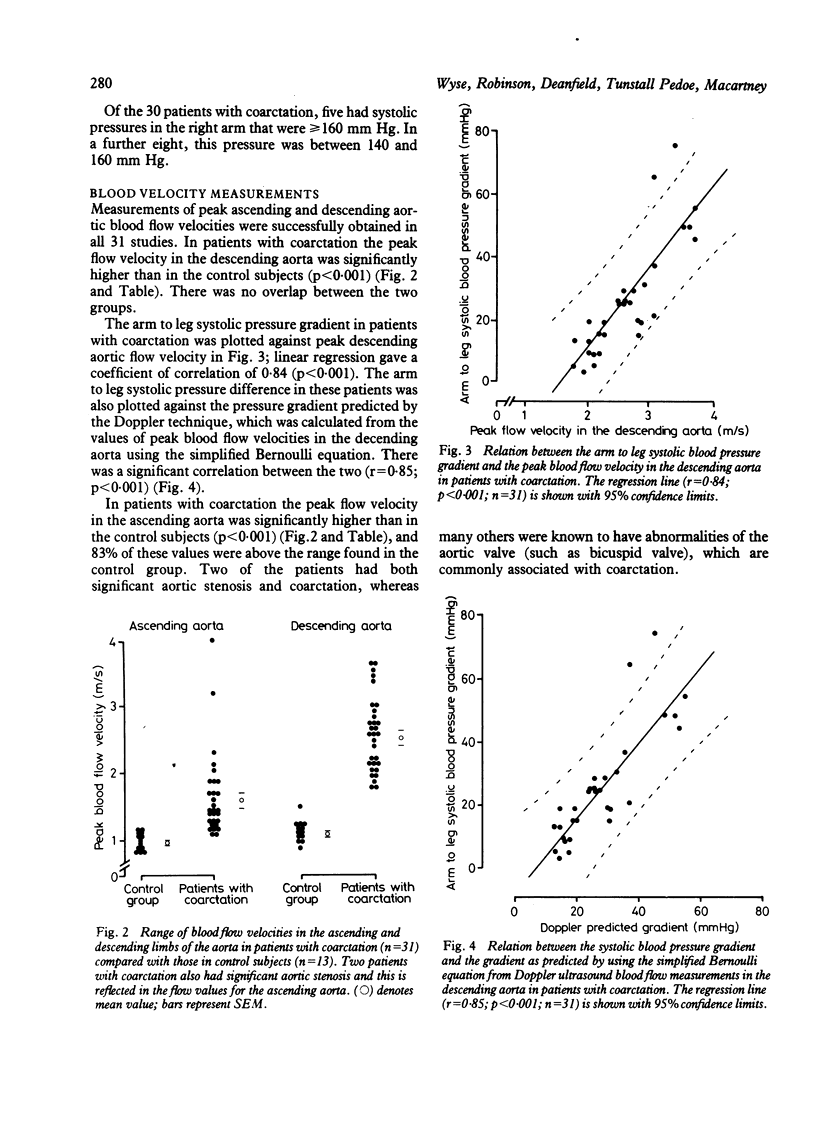
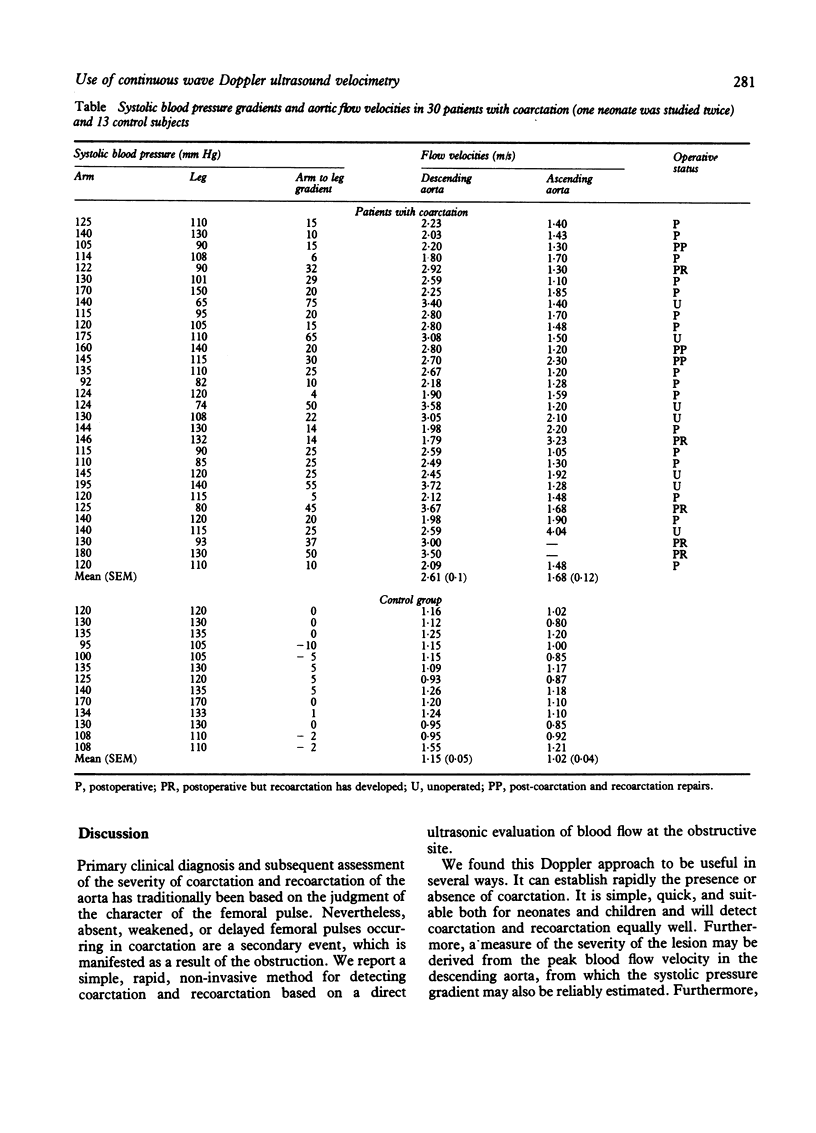
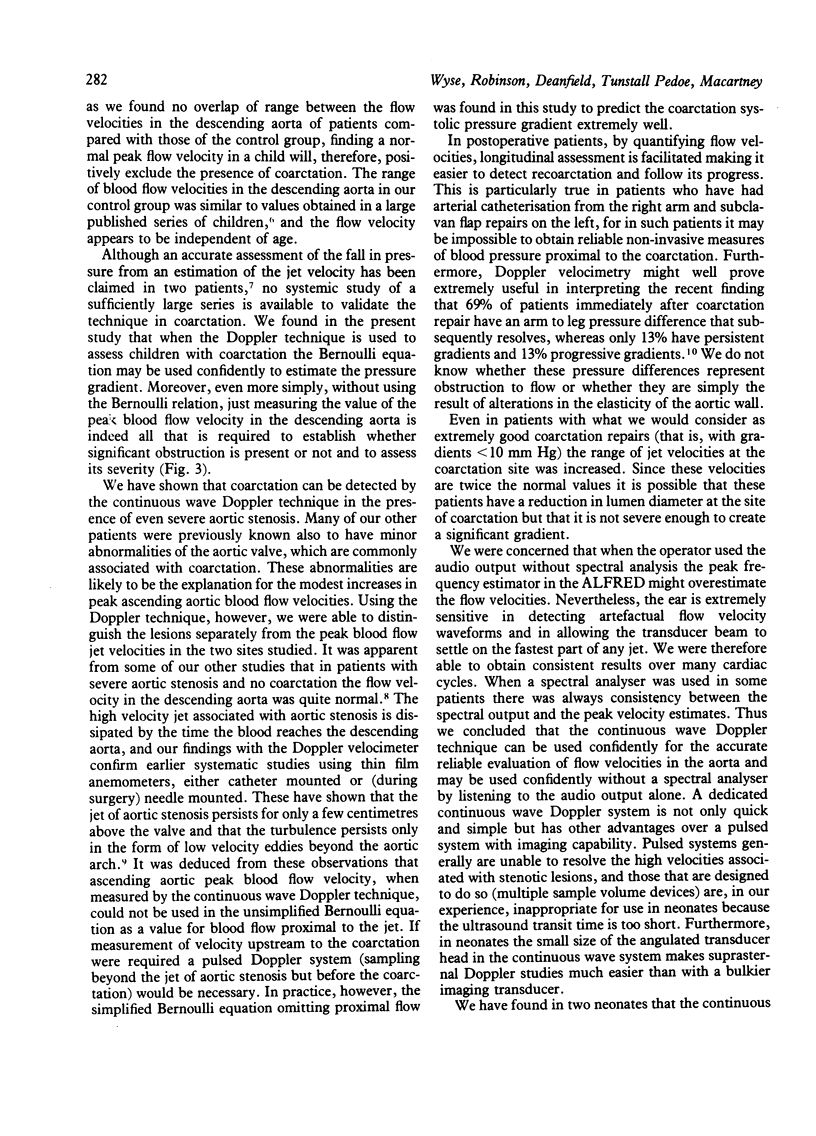

Selected References
These references are in PubMed. This may not be the complete list of references from this article.
- Hatle L., Angelsen B. A., Tromsdal A. Non-invasive assessment of aortic stenosis by Doppler ultrasound. Br Heart J. 1980 Mar;43(3):284–292. doi: 10.1136/hrt.43.3.284. [DOI] [PMC free article] [PubMed] [Google Scholar]
- Hatle L. Noninvasive assessment and differentiation of left ventricular outflow obstruction with Doppler ultrasound. Circulation. 1981 Aug;64(2):381–387. doi: 10.1161/01.cir.64.2.381. [DOI] [PubMed] [Google Scholar]
- Smallhorn J. F., Huhta J. C., Adams P. A., Anderson R. H., Wilkinson J. L., Macartney F. J. Cross-sectional echocardiographic assessment of coarctation in the sick neonate and infant. Br Heart J. 1983 Oct;50(4):349–361. doi: 10.1136/hrt.50.4.349. [DOI] [PMC free article] [PubMed] [Google Scholar]
- Waldman J. D., Lamberti J. J., Goodman A. H., Mathewson J. W., Kirkpatrick S. E., George L., Turner S. W., Pappelbaum S. J. Coarctation in the first year of life. Patterns of postoperative effect. J Thorac Cardiovasc Surg. 1983 Jul;86(1):9–17. [PubMed] [Google Scholar]


